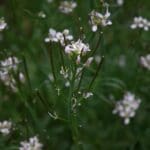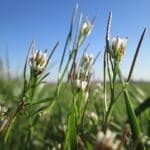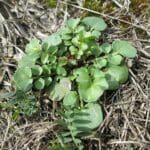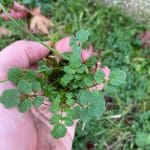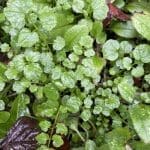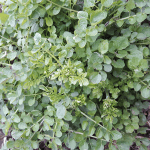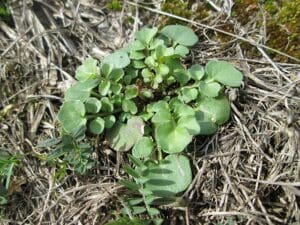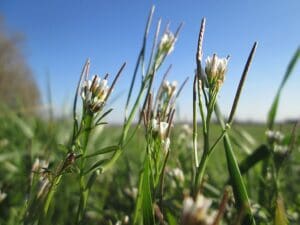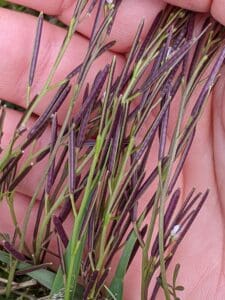Hairy Bittercress / Spring / Summer / Autumn / Winter / Edible
Botanical name
Cardamine hirsuta
Scientific Classification
Kingdom – Plantae
Order –Brassicales
Family – Brassicaceae
Physical Characteristics for Hairy Bittercress
Hairy bittercress is a very successful plant and, in the UK, will go through its life cycle several times between spring and early winter
Leaves
Forms a rosette of leaves made up of pairs of round, slightly lobed leaflets and terminating in a kidney shaped leaf. The leaves are covered in tiny hairs.
Flowers
Hairy Bittercress puts up a flower stalk that can reach up to 30 cm in height but is usually much shorter, that produces a cluster of small white flowers.
Seeds
Those flowers become long thin seed pods about 2.5 cm long, that explosively eject numerous small seeds.
Habitat
Disturbed earth, cracks in pavements, open ground, turf, plant pots, walls – any tiny bit of soil it can find!
Known hazards
No known hazards.
Could be confused with
Other members of the Cardamine family, all of which are edible. Or, young Watercress (Nastertium Officinale), which is also edible – though bear in mind plants growing in waterways in the UK should be cooked first to deal with the risk of parasites.
Edible uses
All parts of the plants are edible and taste strongly of cress. However, the flower stalk can get quite woody. Hairy Bittercress has a lovely flavour to add to a salad and, like cress, works very well with scrambled eggs or egg mayonnaise.
Notes on Herbal Uses
Some circumstantial evidence suggests that Hairy Bittercress may have anti-tumour properties.
Please see your doctor if you have a medical problem
Extra notes from the Foragers
Cardamine comes from the Greek Kardamon, meaning cress-like. Hirsuta means hairy, which is in references to the hairs on the leaves of Hairy Bittercress.
It provides an early source of nectar for butterflies.



